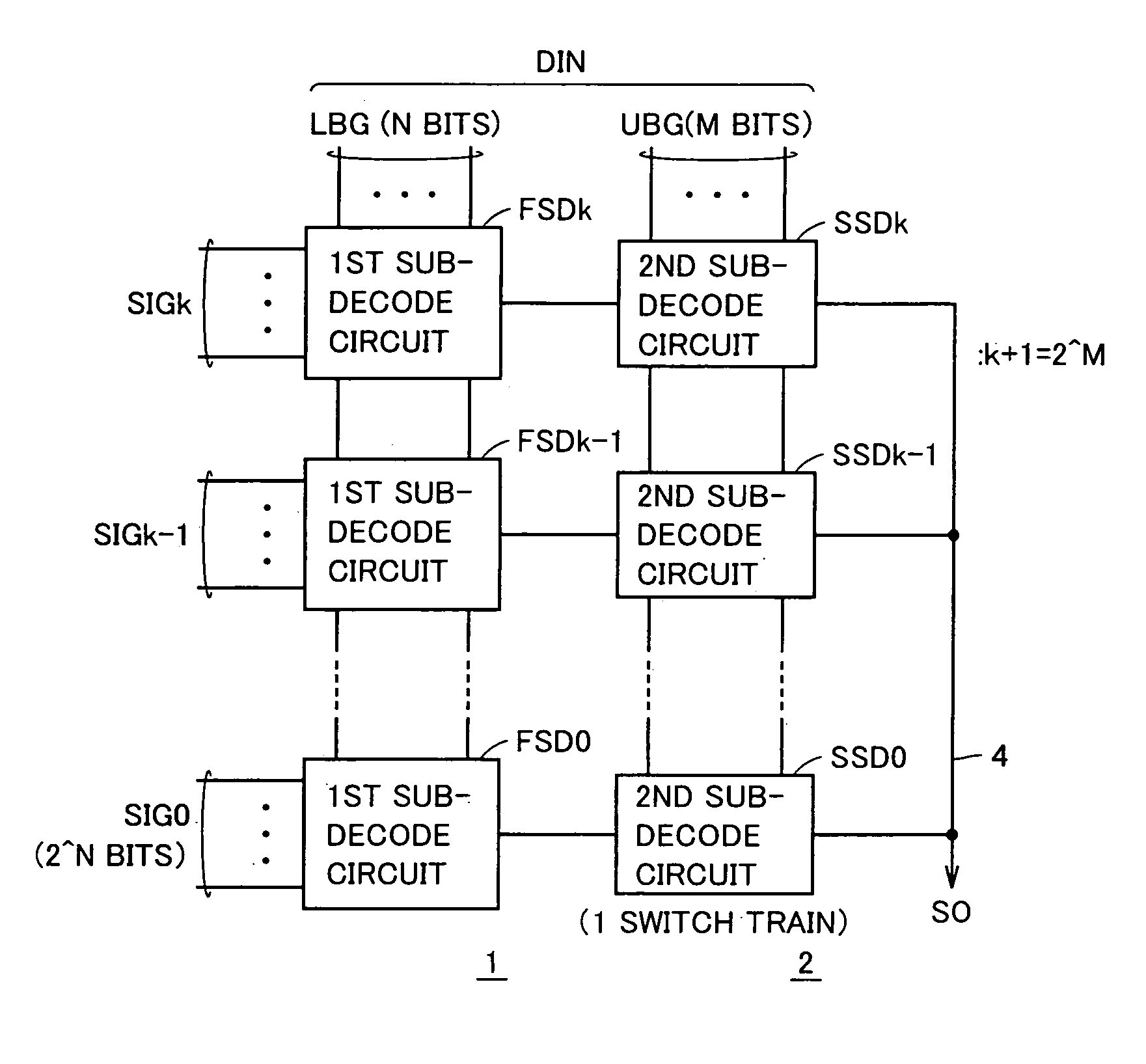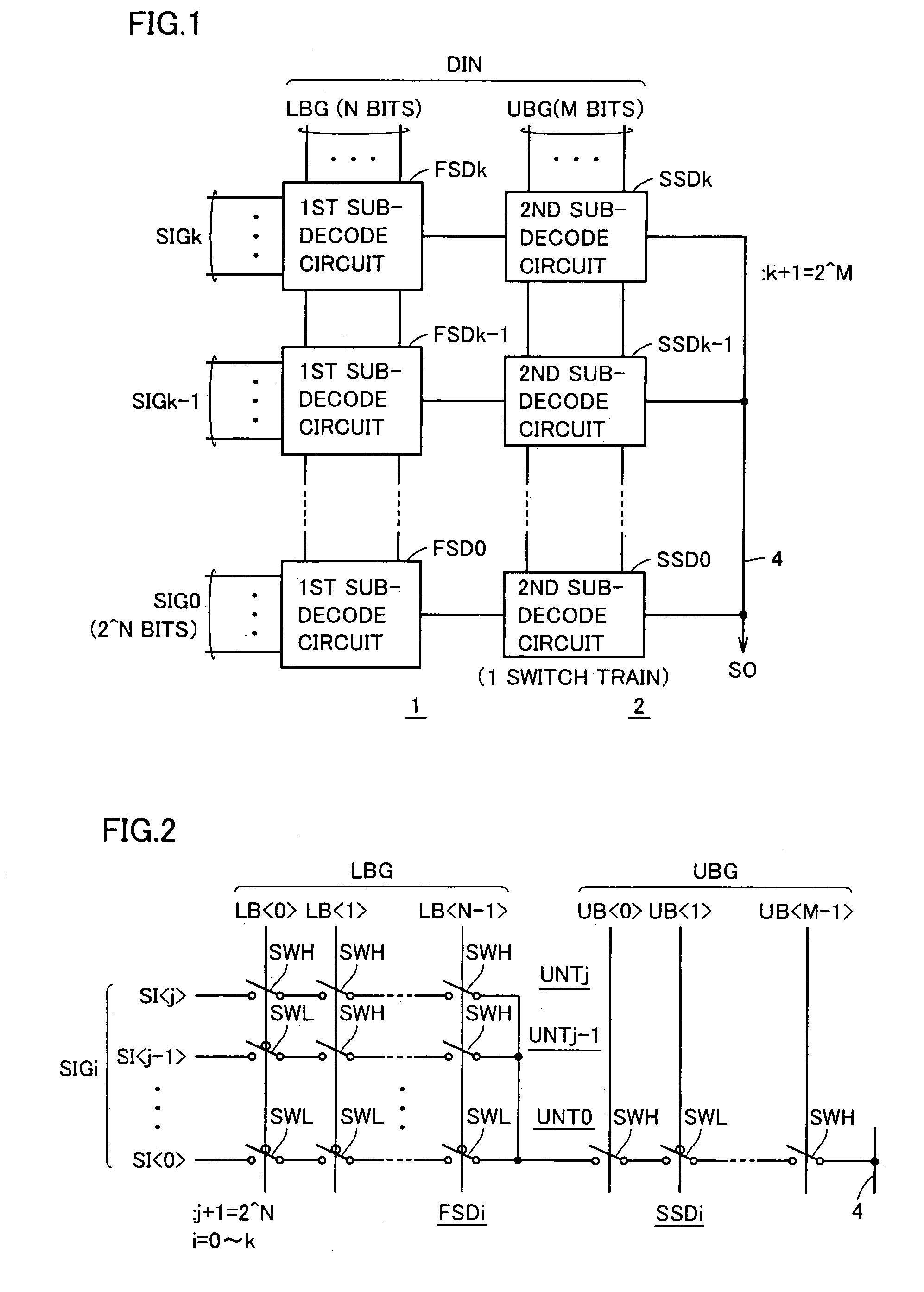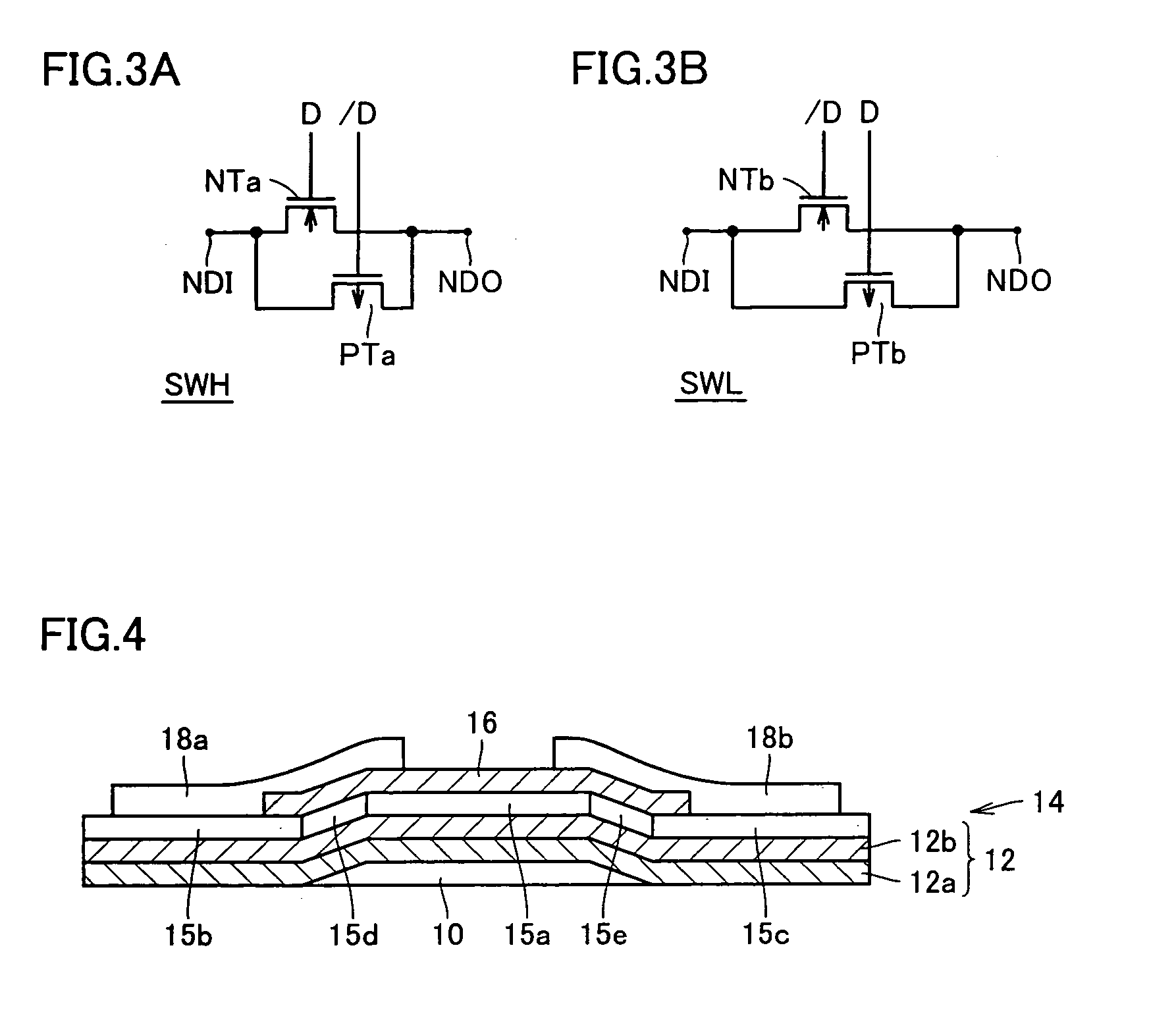Decode circuitry and a display device using the same
a display device and circuit technology, applied in the field of decoding circuits, can solve the problems of affecting the size reduction of the display device, increasing the current consumption of the circuit, and the inability to transmit reference voltage at a fully accurate level, etc., and achieve the effect of fast decoding operation
- Summary
- Abstract
- Description
- Claims
- Application Information
AI Technical Summary
Benefits of technology
Problems solved by technology
Method used
Image
Examples
first embodiment
[0044]FIG. 1 schematically shows a construction of a decode circuit according to a first embodiment of the invention. In FIG. 1, the decode circuit includes a first decode circuit 1 for selecting one candidate from each of selection candidate groups SIG0–SIGk according to a lower bit group LBG of multi-bit data DIN, and a second decode circuit 2 for producing an output signal SO by selecting one output from the outputs of first decode circuit 1 according to an upper bit group UBG of multi-bit data DIN.
[0045]In multi-bit data DIN, lower bit group LBG includes N bits, and upper bit group UBG includes M bits. Each of selection candidate groups SIG0–SIGk includes an electric signal of 2^N bits. The electric signal is any of a logic signal, a voltage and a current. These selection candidate groups SIG0–SIGk are divided into groups according to a bit number M of upper bit group UBG, and satisfy a relationship of k+1=2^M.
[0046]The first decode circuit 1 includes first sub-decode circuits F...
second embodiment
[0104]FIG. 7 shows a construction of a decode circuit according to a second embodiment of the invention. The decode circuit shown in FIG. 7 employs four-bit data D3–D0, for selecting one from 16 reference voltages V0–V15. This decode circuit may be utilized for the decode circuit of the digital-to-analog conversion unit in the image display device implementing the 16-level gradation display. Most significant bit MSB is bit D3, and least significant bit LSB is bit D0. The decode operation is first performed according to upper bits D3 and D2, and subsequently the final decode operation is performed according to the lower bit group.
[0105]Since data bits D3–D0 represent the numbers indicating reference voltages V0–V15, the selection candidate reference voltages V0–V15 are divided into reference voltage sets of V(4n), V(4n+1), V(4n+2) and V(4n+3), where n is an integer from 0 to 3. First sub-decode circuit FSD0 is arranged for the set of reference voltages V(4n: n=0, 1, 2, 3), first sub-...
third embodiment
[0119]FIG. 9 schematically shows a construction of a display device according to a third embodiment of the invention. In FIG. 9, the display device includes a pixel array (display panel) 20 having pixels PX arranged in rows and columns. In the pixel array 20, gate lines G0–Gm are arranged corresponding to the respective rows of pixels PX, and data lines DL are arranged corresponding to the respective columns of pixels PX. FIG. 9 representatively shows pixels PX connected to gate line G0 in pixel array 20. Data lines DL are divided into groups each including the data lines of k in number. This is because the decode operation (digital-to-analog converting operation) is effected in units of sets or groups of the data lines as will be described later.
[0120]A vertical drive circuit 21 sequentially drives gate lines G0–Gm to the selected state every horizontal scanning period. Vertical drive circuit 21 receives a vertical operation start instruction signal VST and a vertical shift clock s...
PUM
 Login to View More
Login to View More Abstract
Description
Claims
Application Information
 Login to View More
Login to View More - R&D
- Intellectual Property
- Life Sciences
- Materials
- Tech Scout
- Unparalleled Data Quality
- Higher Quality Content
- 60% Fewer Hallucinations
Browse by: Latest US Patents, China's latest patents, Technical Efficacy Thesaurus, Application Domain, Technology Topic, Popular Technical Reports.
© 2025 PatSnap. All rights reserved.Legal|Privacy policy|Modern Slavery Act Transparency Statement|Sitemap|About US| Contact US: help@patsnap.com



